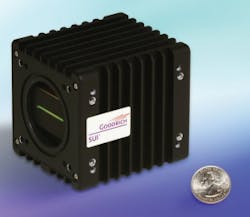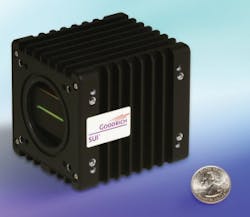UV light generates guanine, inspires prebiotic research
Attempts to understand the building blocks of life on earth have been stymied by the elusiveness of the RNA base guanine (G). While RNA's other three bases–adenine (A), cytosine (C) and uracil (U)–can be generated by heating a simple precursor compound in the presence of certain naturally occurring catalysts, guanine has not been observed as a product of these reactions. Now researchers at the Georgia Institute of Technology and Sapienza University have shown for the first time that adding ultraviolet (UV) light to a model prebiotic reaction does the trick.1 The result is the knowledge that the chemical and environmental requirements to produce life are probably less restrictive than once thought.
Recent efforts to understand the prebiotic formation of the building blocks of RNA have focused on the chemical formamide (H2NCOH) as a potential starting material because it contains the four required elements–carbon, hydrogen, oxygen and nitrogen–and because of its stability, reactivity and low volatility compared to water. Previous reports have shown that these nucleic acid components (except guanine) can be synthesized by heating formamide to 160°C in the presence of mineral catalysts. The new research shows that subjecting a solution of formamide to UV during heating produces trace guanine, whose yield is boosted when minerals and photons are used together. In addition, production of adenine and a related molecule, hypoxanthine, also increased substantially when UV light was added along with heat.
"These results potentially relax some of the requirements and reactions necessary to get life started, because formamide molecules would not have had to be in contact with a particular type of rock when heated on the prebiotic Earth, if the formamide was exposed to direct sunlight during heating," said Nicholas Hud, a professor in the Georgia Tech School of Chemistry and Biochemistry.
The study further demonstrated that guanine, adenine and hypoxanthine can be produced at 30°C less than previously reported, even in the absence of minerals, as long as photons are added.
"For these experiments, we built a very simple reaction chamber with an inexpensive 254 nm photon source to simulate conditions that could have been present on early Earth," explained Thomas Orlando, also a professor in Georgia Tech's School of Chemistry and Biochemistry. "We didn't need extremely sophisticated experimental systems or expensive lasers." Sophisticated mass spectrometers were needed, though, to analyze the resulting complex chemical mixtures.
1. H. Barks et al., ChemBioChem. 11 (9): 1240-1243 (2010)
More BioOptics World Current Issue Articles
More BioOptics World Archives Issue Articles

